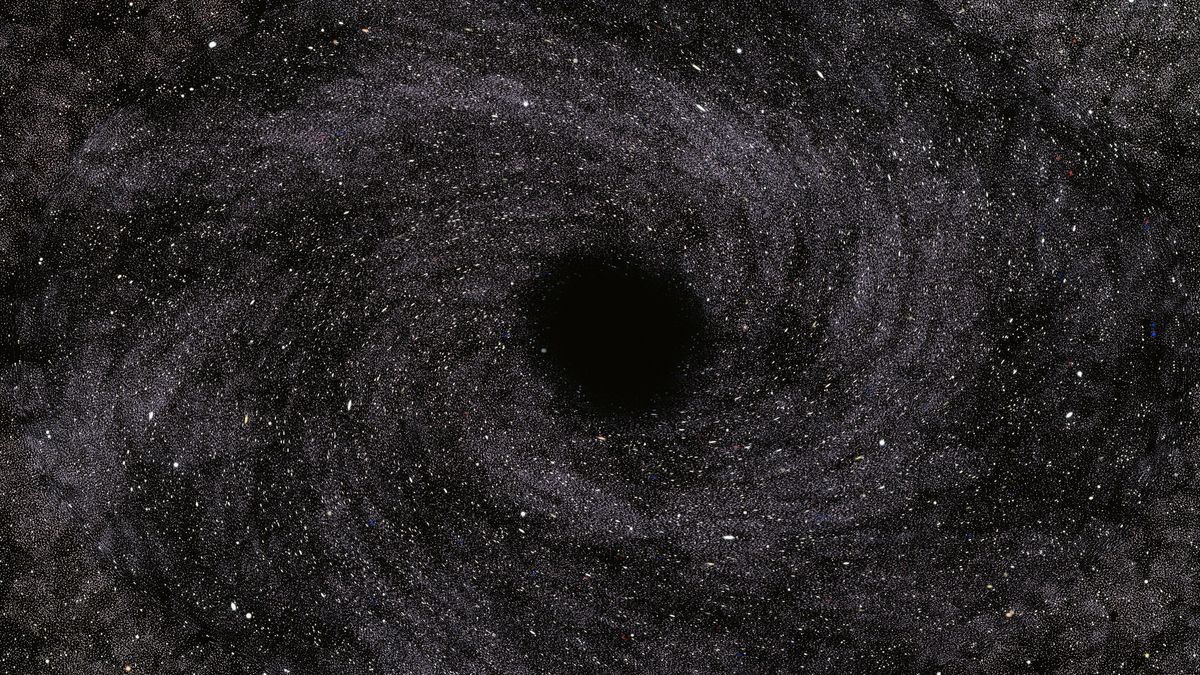
In 1974, Stephen Hawking theorized that the universe's darkest gravitational behemoths, black holes, were not the pitch-black star swallowers astronomers imagined, but they spontaneously emitted light — a phenomenon now dubbed Hawking radiation.
The problem is, no astronomer has ever observed Hawking's mysterious radiation, and because it is predicted to be very dim, they may never will. Which is why scientists today are creating their own black holes.
Researchers at the Technion-Israel Institute of Technology did just that. They created a black hole analog out of a few thousand atoms. They were trying to confirm two of Hawking's most important predictions, that Hawking radiation arises from nothing and that it does not change in intensity over time, meaning it's stationary.
"A black hole is supposed to radiate like a black body, which is essentially a warm object that emits a constant infrared radiation," study co-author Jeff Steinhauer, an associate professor of physics at Technion-Israel Institute of Technology, said in a statement. "Hawking suggested that black holes are just like regular stars, which radiate a certain type of radiation all the time, constantly. That's what we wanted to confirm in our study, and we did."
Related: The 12 strangest objects in the universe
The event horizon
The gravity of a black hole is so powerful that not even light can escape its grasp, once a photon, or light particle, crosses beyond its point-of-no-return, called the event horizon. To escape this boundary, a particle would have to break the laws of physics and travel faster than the speed of light.
Hawking showed that although nothing that crosses the event horizon can escape, black holes can still spontaneously emit light from the boundary, thanks to quantum mechanics and something called "virtual particles."
As explained by Heisenberg's uncertainty principle, even the complete vacuum of space is teeming with pairs of 'virtual' particles that pop in and out of existence. These fleeting particles with opposite energies usually annihilate each other almost immediately. But due to the extreme gravitational pull at an event horizon, Hawking suggested pairs of photons could be separated, with one particle getting absorbed by the black hole and the other escaping into space. The absorbed photon has negative energy and subtracts energy in the form of mass from the black hole, while the escaped photon becomes Hawking radiation. From this alone, given enough time (much longer than the age of the universe), a black hole could completely evaporate away.
"Hawking's theory was revolutionary because he combined the physics of quantum field theory with general relativity," Einstein's theory that describes how matter warps space-time,Steinhauer told Live Science. "It's still helping people to look for new laws of physics by studying the combination of these two theories in a physical example. People would like to verify this quantum radiation, but it's very difficult with a real black hole because Hawking radiation is so weak compared to the background radiation of space."
This problem inspired Steinhauer and his colleagues to create their own black hole — a safer and much smaller one than the real deal.
DIY black hole
The researchers' lab-grown black hole was made of a flowing gas of approximately 8,000 rubidium atoms cooled to nearly absolute zero and held in place by a laser beam. They created a mysterious state of matter, known as a Bose-Einstein Condensate (BEC), which allows thousands of atoms to act together in unison as though they were a single atom.
Using a second laser beam, the team created a cliff of potential energy, which caused the gas to flow like water rushing down a waterfall, thereby creating an event horizon where one half of the gas was flowing faster than the speed of sound, the other half slower. In this experiment, the team was looking for pairs of phonons, or quantum sounds waves, instead of pairs of photons,spontaneously forming in the gas.
A phonon on the slower half could travel against the flow of gas, away from the cliff, while the phonon on the faster half became trapped by the speed of the supersonic flowing gas, Steinhauer explained. "It's like trying to swim against a current that's faster than you can swim. [That's] just like being in a black hole, once you're inside, it's impossible to reach the horizon."
Once they found these phonon pairs, the researchers had to confirm whether they were correlated and if the Hawking radiation remained constant over time (if it was stationary). That process was tricky because every time they took a picture of their black hole, it was destroyed by the heat created in the process. So the team repeated their experiment 97,000 times, taking more than 124 days of continuous measurements in order to find the correlations. In the end, their patience paid off.
"We showed that the Hawking radiation was stationary, meaning it didn't change with time, which is exactly what Hawking predicted," Steinhauer said.
The researchers detailed their findings Jan. 4 in the journal Nature Physics.
Originally published on Live Science.
Article From & Read More ( Lab-grown black hole behaves just like Stephen Hawking said it would - Livescience.com )https://ift.tt/3kEhnWg
Science
No comments:
Post a Comment